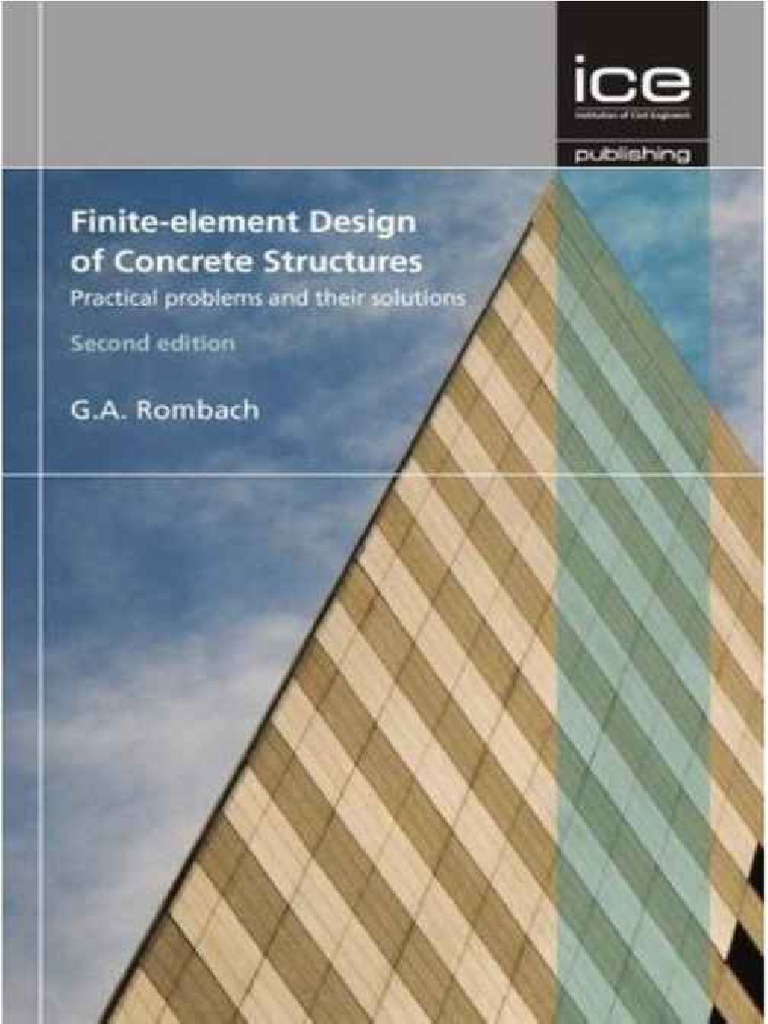Category:Finite-Element Design of Concrete Structures, 2nd edition free ebook downloadViews: 390Likes: 60Author(s):GA RombachDate:2011-11-14Format:PDFLanguage:EnglishISBN/ASIN:Pages:350OCR:YQuality:GoodISBN741899Uploader:Upload Date:1/29/2017 3:33:54 PMTo download click on link in the Links Table belowDescription:Numerical calculations based on the finite element design method have become a standard tool for the design of many structures. In this book, the author highlights that complex numerical calculations should not be used to compensate for any lack of practical knowledge of the behaviour of a structure. This new edition up to date with the increasingly complex finite element models and nonlinear material analysis being used in the field. The book focuses on and references Eurocode 2 throughout.Links Table.
Finite Element Design Concrete Structures Rombach Pdf Download Pdf
This book is part of the “How to” series and is the first NAFEMS publication that addresses the specialist area of modelling structural concrete with finite elements.Concrete is the most prolific man made material used in the World and although inthe large majority of applications little detailed analysis is used there remains asignificant number of structures where sophisticated analysis including finiteelement modelling is required to justify concrete structure design. These structures include the World’s largest man-made object (in terms of volume), the Three Gorges Dam which is built from 27 million m3 the World’s tallest building, Burj khalifa at 828m tall, Dubai, UAE. Also included are safety critical structures required for nuclear containment, structures for the storage of highly volatile chemicals and fuels, and some of the World’s longest spanning bridges.The use of structural concrete is highly prescribed and structures are nearly always designed and analysed to rules given in codes of practice. Generally, analysis of concrete structures is limited to linear techniques and these are now common place in many commercial design engines, and these techniques are briefly discussed in this book.
However, there is increasing interest in more realistic simulation of concrete structures, were code of practice rules cannot be easily applied, and where a better understanding of performance is required. Hence, it is the more realistic simulation of concrete that is the subject of this book where aspects such as prediction of strength and cracking are considered.This book is aimed primarily at engineers and analysts with some experience ofconcrete who are new, or nearly new to non-linear analysis. It is anticipated,however, that it may also be useful to experienced analysts who are new toconcrete. Detailed formulation of material models and the derivation of relevantaspects of the finite element method are not included, but references for furtherreading are provided.
Instead, the focus is on practical aspects of modellingof concrete, Yangtze River in China, and including hints and tips which the author has found useful in tackling concrete simulation. Uk passport office phone number. Topics include an introductory discussion of material behaviour and non-linearity in reinforced concrete before moving on to finite element modelling. Traditional, non-linear and construction sequence analysis is then described before describing concrete and reinforcement material modelling. Because the behaviour of concrete is so non-linear there is also a discussion on solution procedures including hints on strategies to deal with cracking where sudden losses of stiffness can occur.Most importantly, a section is given to working with codes of practice and advice isgiven on how different types of finite element model can be used within a code ofpractice framework whilst aligning with established design principles. Topics suchas limit state design and partial safety factors are also described and the limitations that must be understood in modelling concrete structures in different ways. Understanding the limitations of simulation and the additional checks that may be necessary is key to the safe design and assessment of concrete structures. Finally, two sets of worked examples are given for the solution of simple concretestructures. The first considers different solution schemes, element types and meshdensities to solve the same problem, illustrates the variations to be expected andsuggests the most appropriate representation.

The second set compares predictedresults with test results for several classic problems and indicates that goodcorrelation can be achieved.This book is very much an introduction on finite element modelling of structuralconcrete. Most topics are covered, albeit briefly, but references are provided forfurther reading. Subjects considered to beyond the scope of this introductioninclude detailed modelling of concrete maturity, creep and shrinkage although some discuss of these phenomena is included. Also, the analysis that has been considered is limited to static problems, dynamic analysis is not considered. So, for example, concrete material models that include strain rate are excluded from discussion.